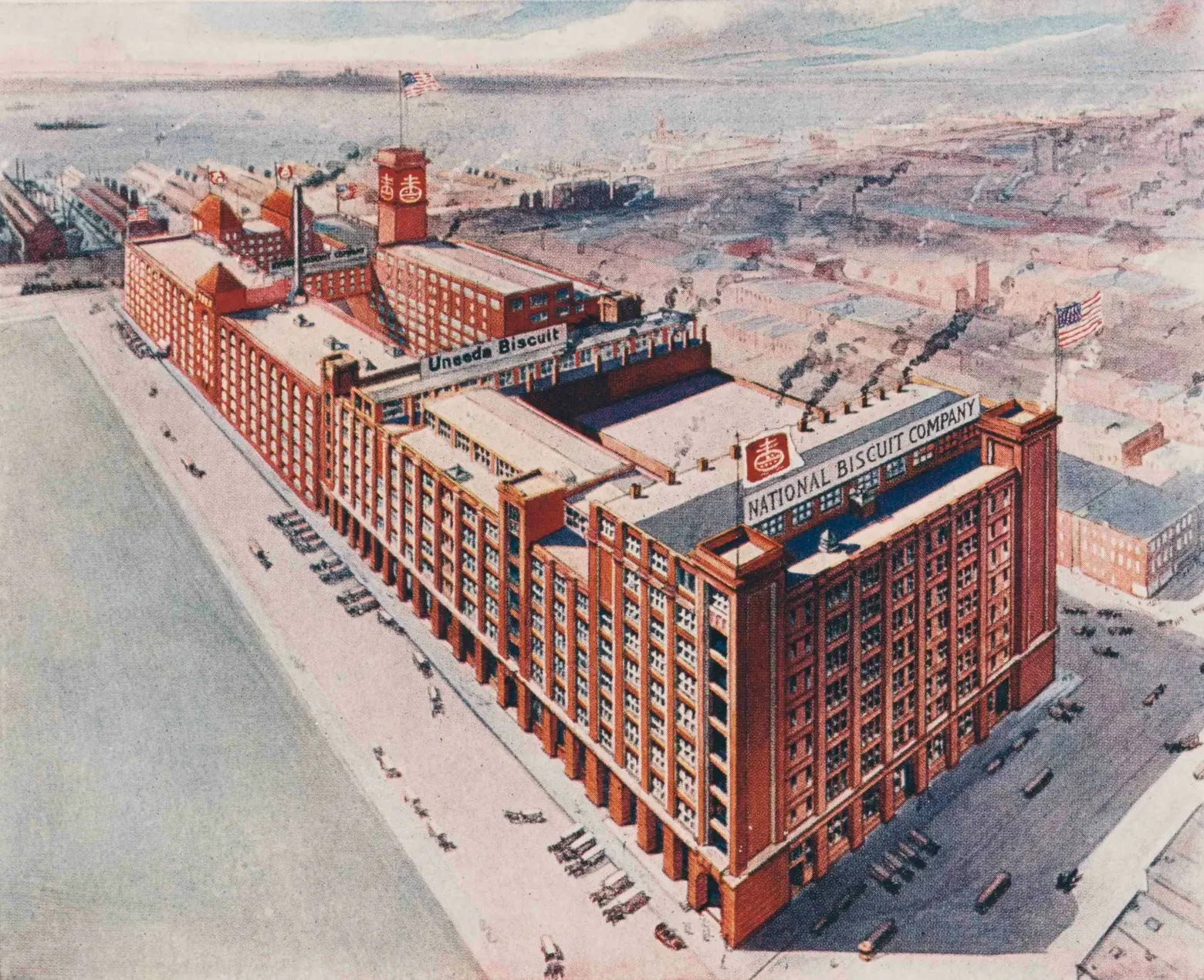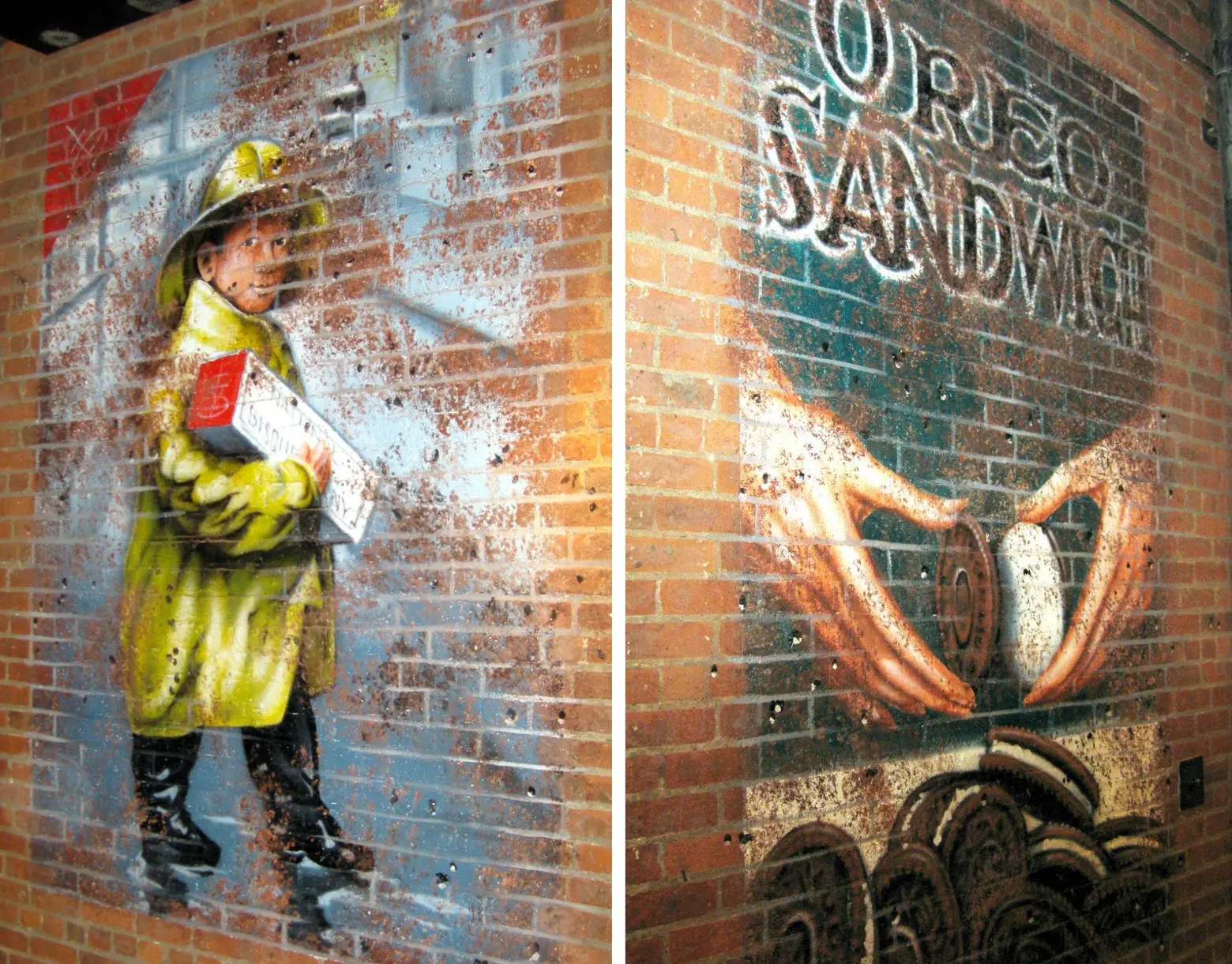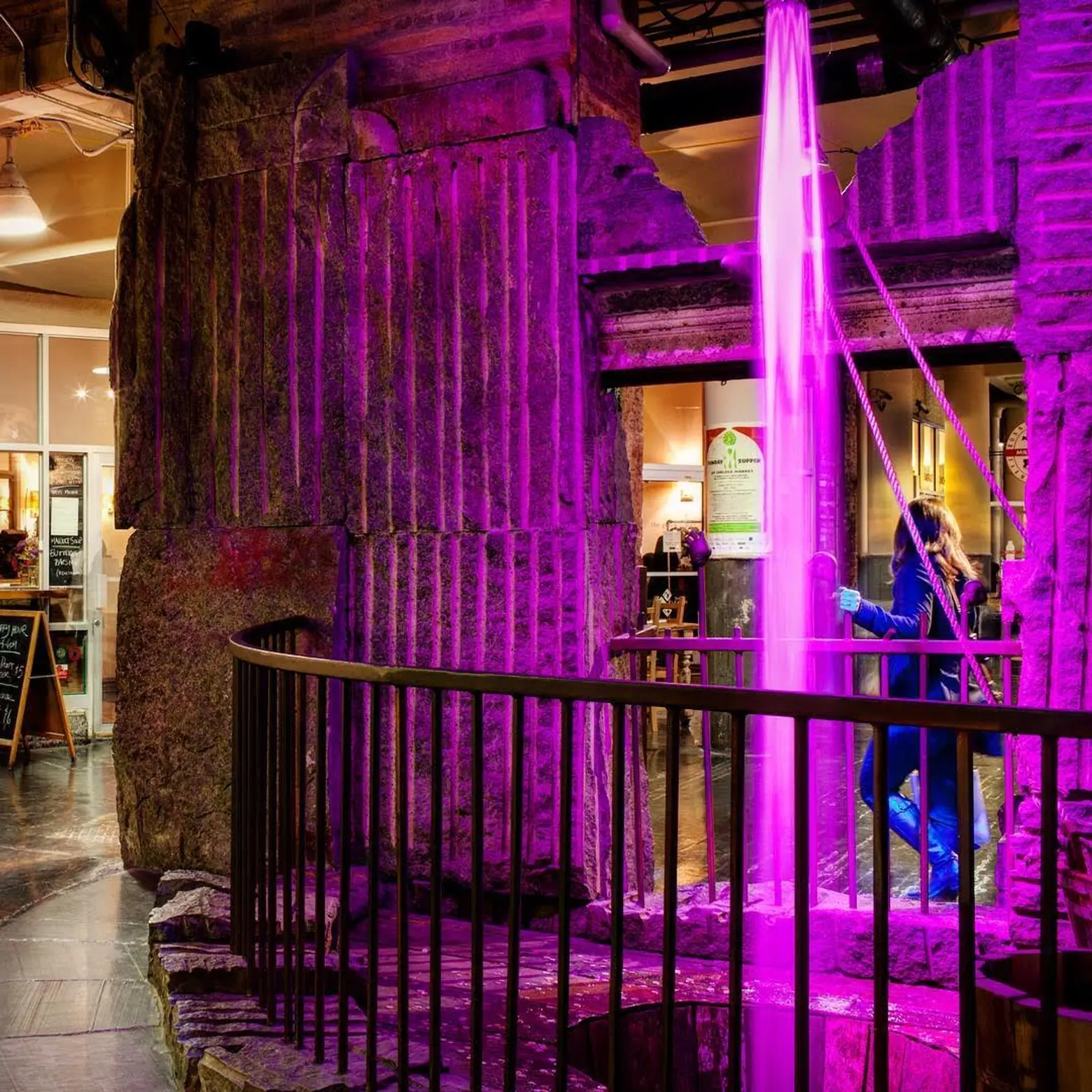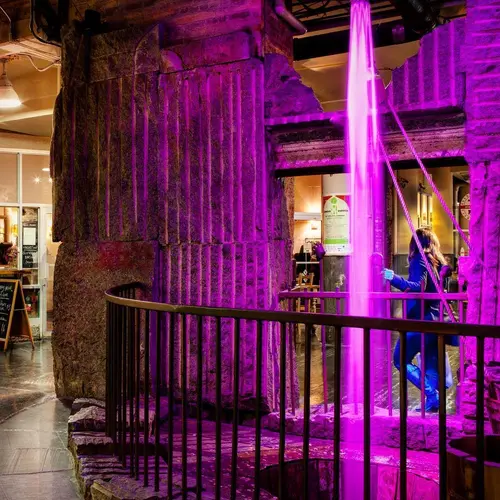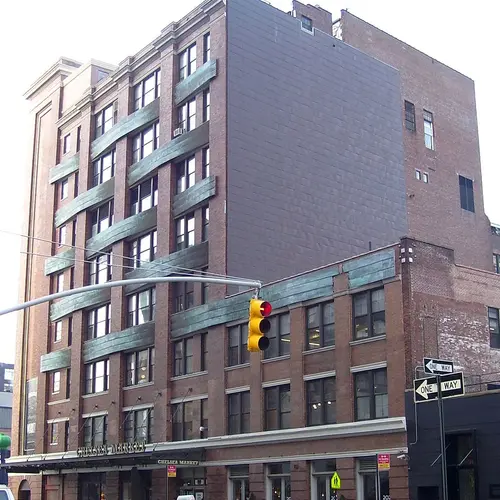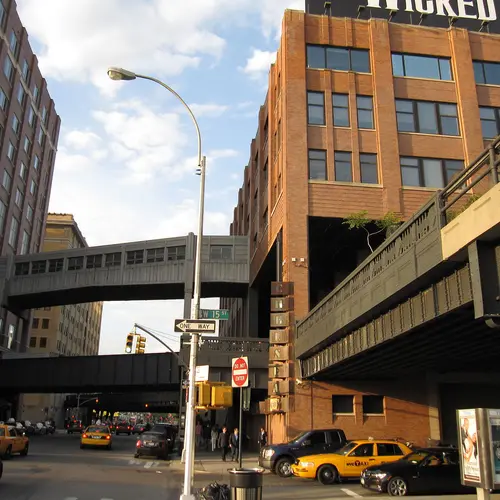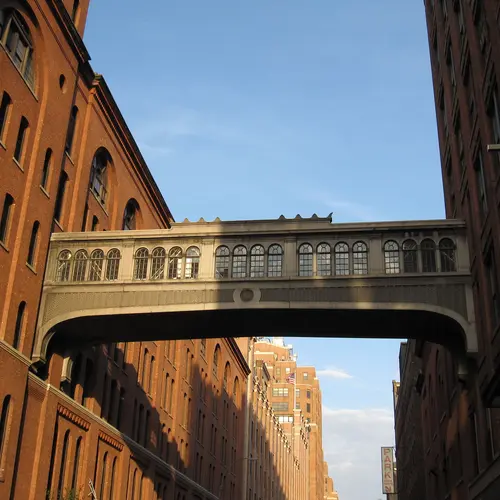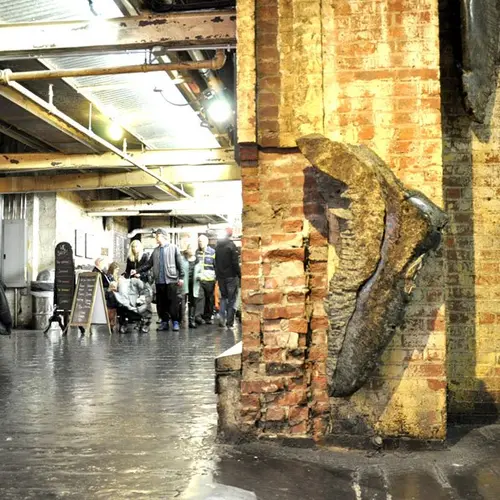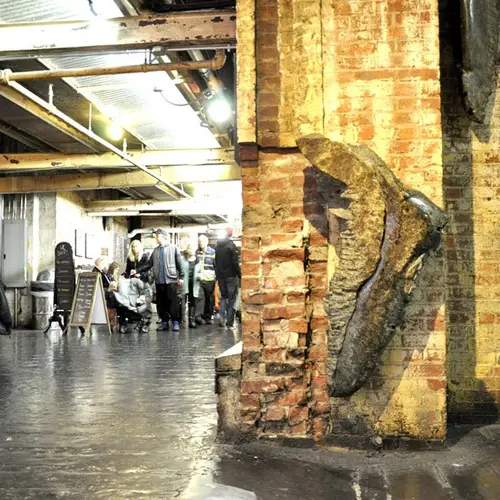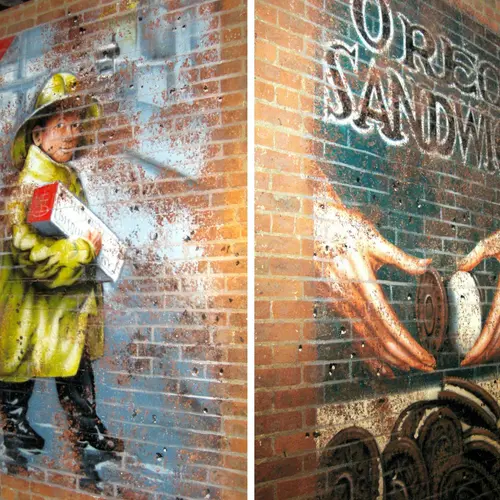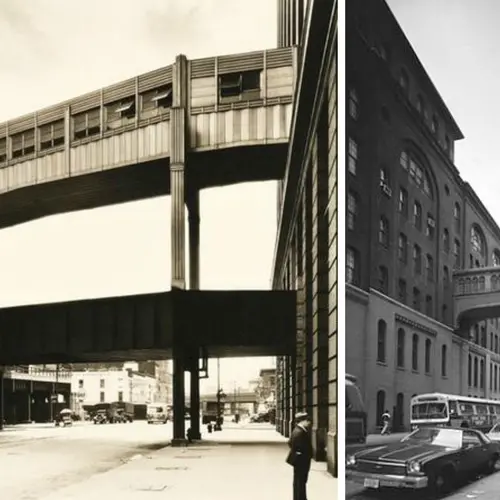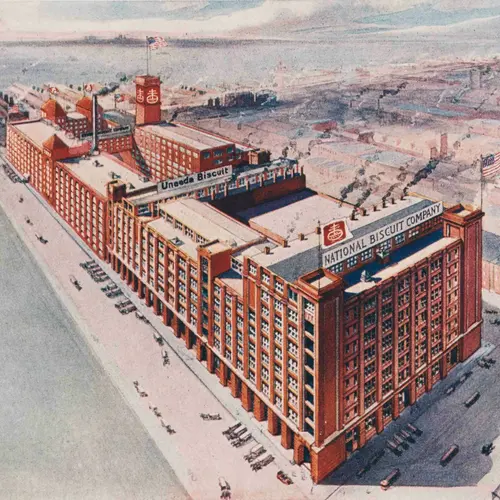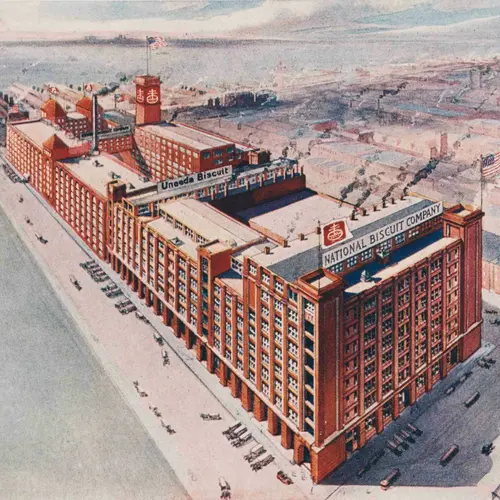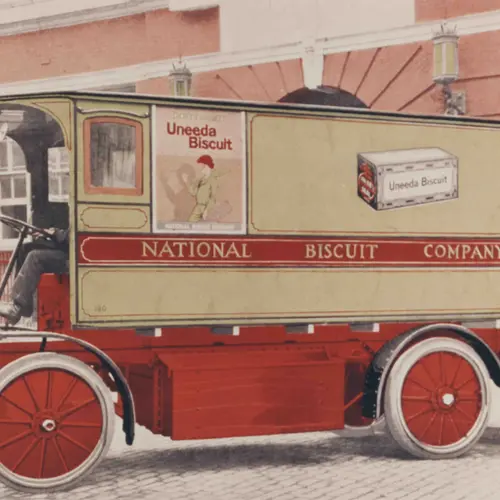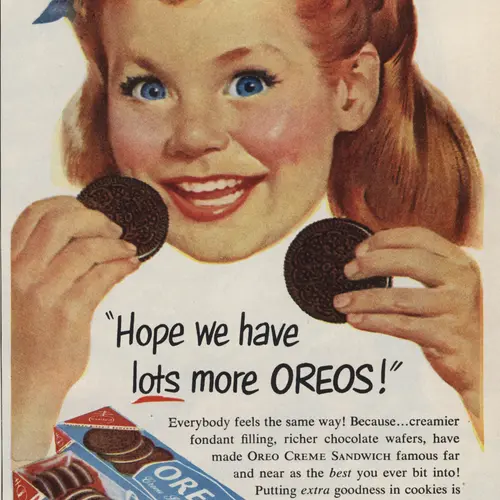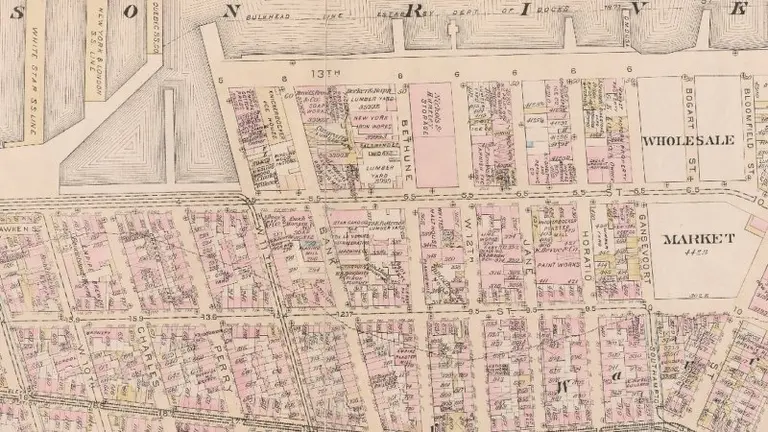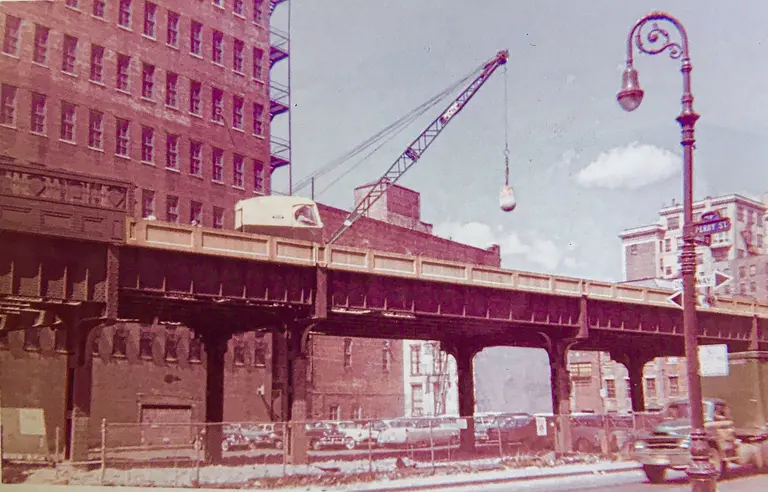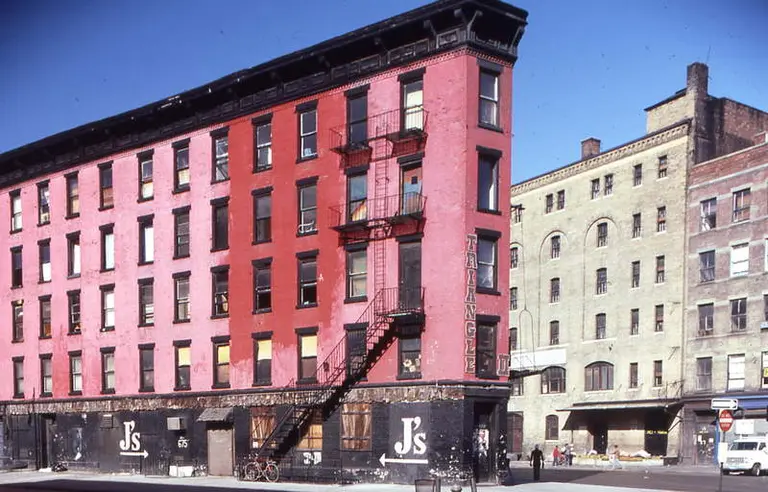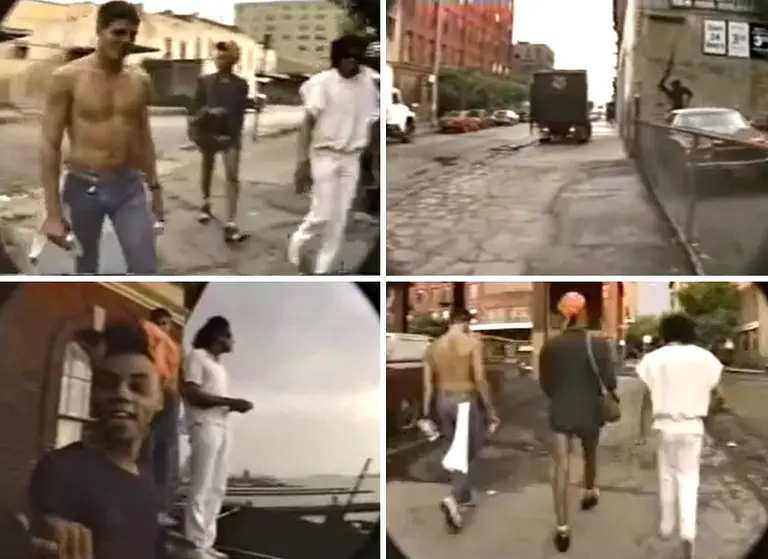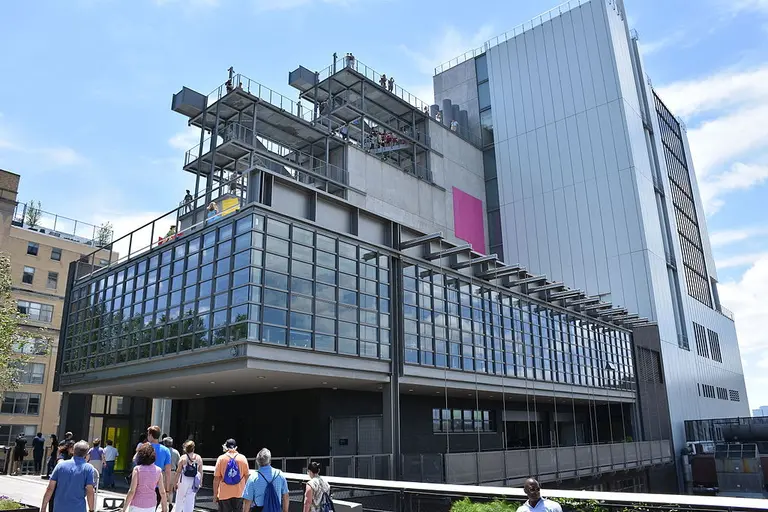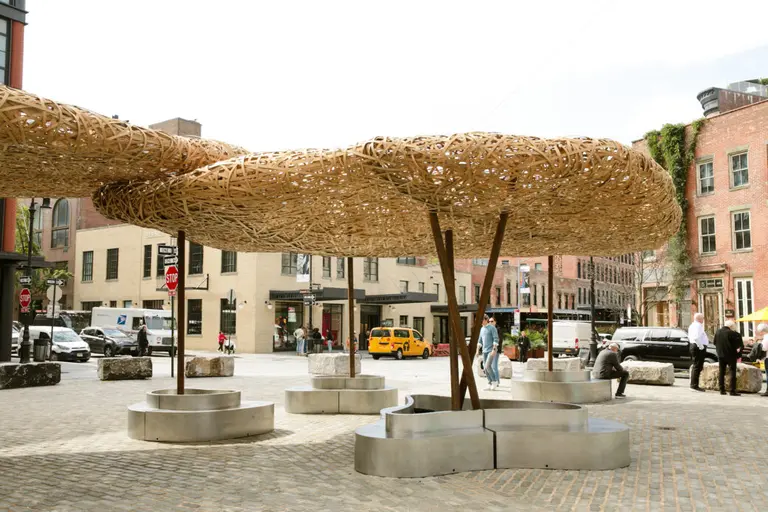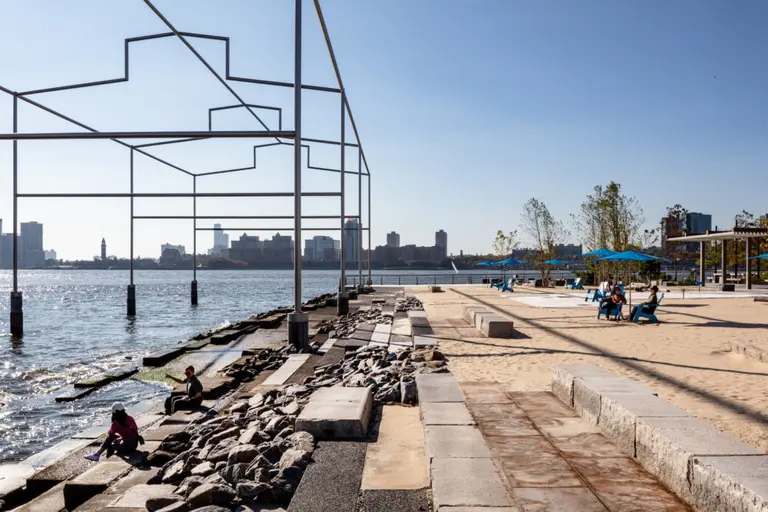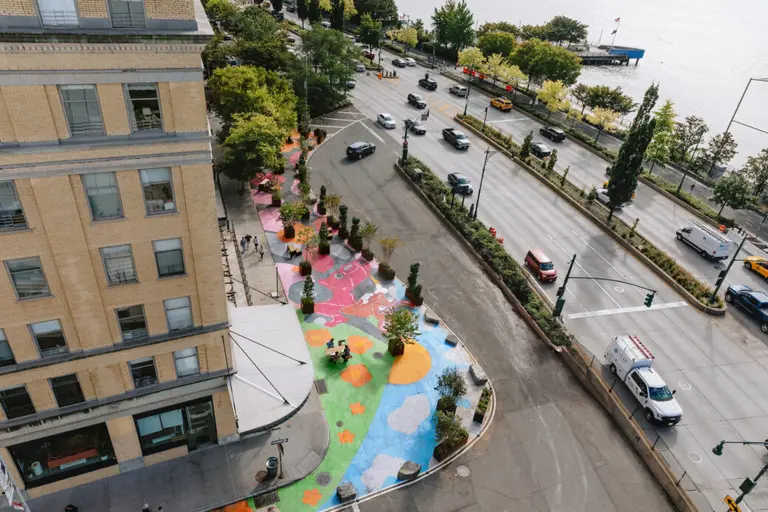From the Westside Cowboys to the Oreo cookie: 10 Secrets of Chelsea Market
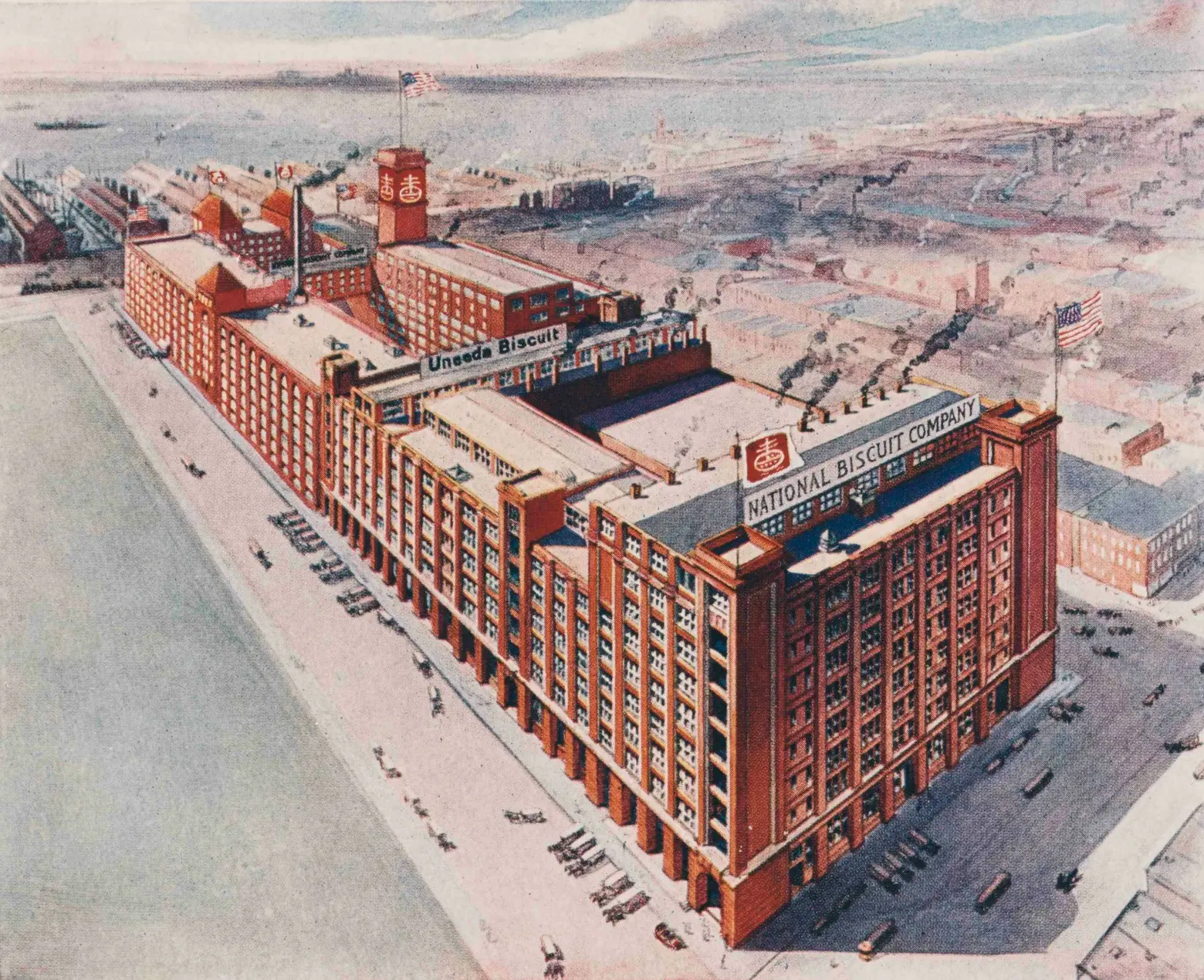
Image courtesy of Chelsea Market
Today it seems like there’s a new food hall popping up every day, but one of the first incarnations of this trend was at Chelsea Market, when Irwin Cohen and Vandenberg Architects transformed the former Nabisco factory in the 1990s into an office building, television production facility, and food-related retail hub. New York City history buffs likely know that this is where a certain famous cookie was invented, but there are plenty of other fun facts about the location that are much less well known. Therefore, 6sqft has rounded up the top 10 most intriguing secrets of Chelsea Market.
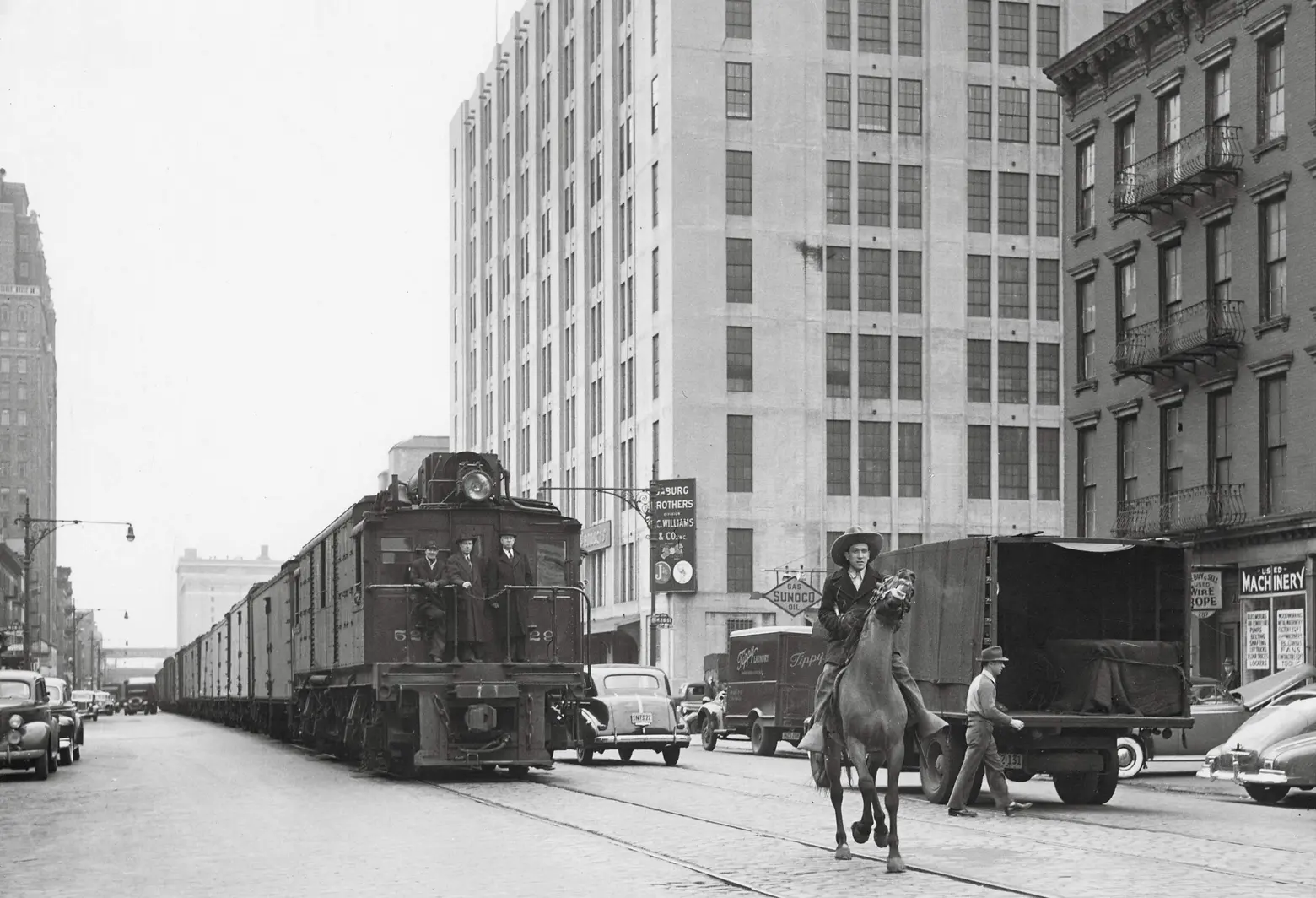 West Side Cowboy on Death Avenue, via Kalmbach Publishing Co.
West Side Cowboy on Death Avenue, via Kalmbach Publishing Co.
1. The market’s concourse still rests on the original railway tracks used in the 1800s by the “Westside Cowboys.”
From 1846 to 1941, a deadly train system appropriately referred to by locals as “The Butcher” rode along 10th and 11th Avenues, which were also aptly dubbed “Death Avenue.” Before it was taken out of service in 1906, the train killed 436 people since there were no barriers, fences or platforms and it rode amongst foot traffic, cabs, and early motorcars. At one point, to curb fatalities, the Hudson River Railroad shipped in actual cowboys from the west to ride horses in front of the trains while waving a red flag to warn pedestrians of the oncoming trains.
2. It’s actually 17 different buildings.
In 1890, eight large baking companies merged to form the New York Biscuit Company, soon thereafter absorbing 12 more bakeries. To house the new company, they built a Romanesque-style complex on the block bound by 10th and 11th Avenues and 15th and 16th Streets. Eight years later, they merged with Chicago’s American Biscuit and Manufacturing Company to form the National Biscuit Company–Nabisco. Over time, the complex expanded to include 17 different buildings–a market, factory, retail stores, and offices.
3. The main structure was built on landfill where excavators found the remains of an old schooner.
The main structure of those described above is an 11-story building erected in 1913 by architect Albert G. Zimmerman. It occupies the full block and was built on landfill and during construction, excavators found the timbers, anchor, and chains of an old two-masted schooner.
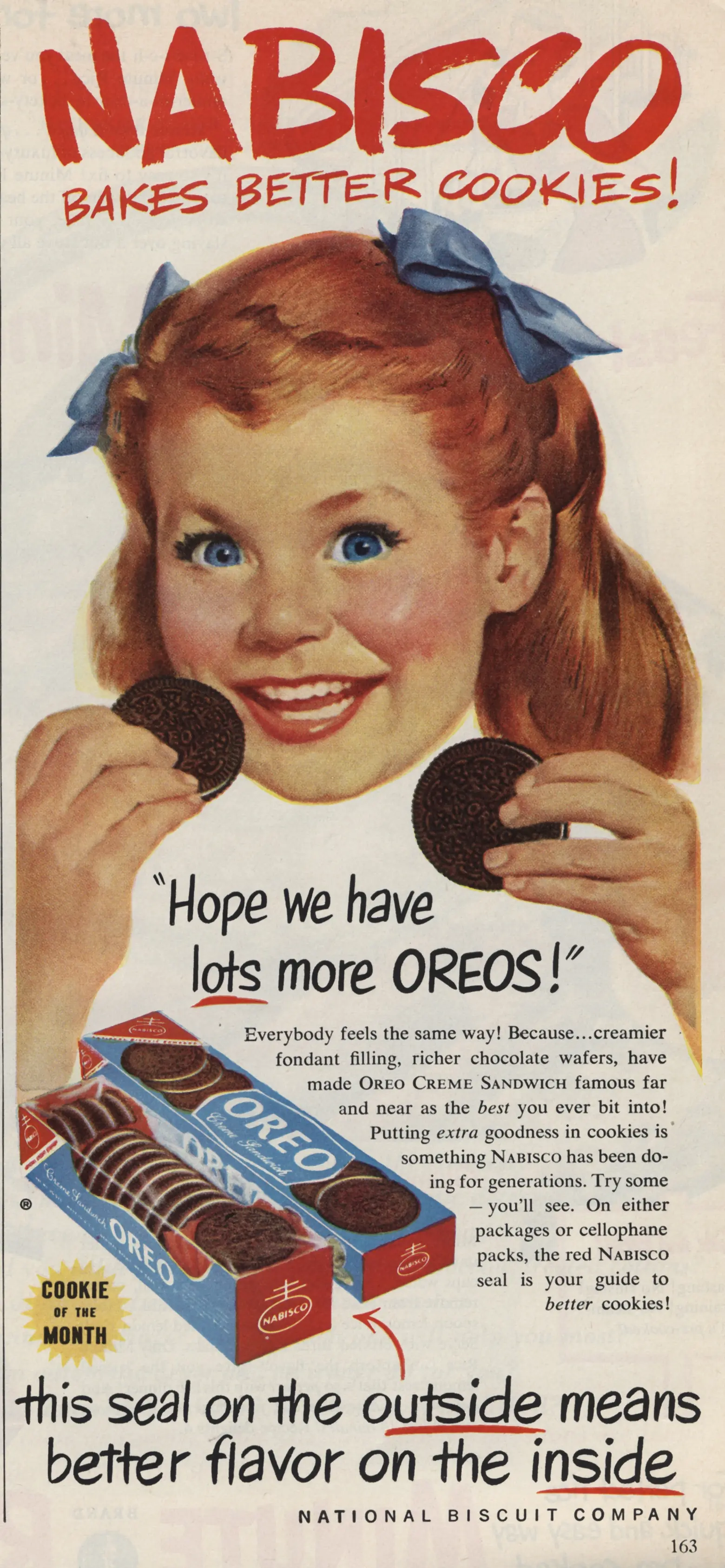 A 1952 Oreo add, via Wishbook/Flickr
A 1952 Oreo add, via Wishbook/Flickr
4. The Oreo cookie was invented here.
In 1912, Nabisco wanted to create a cookie to compete with Hydrox, a creme-filled sandwich cookie (most people don’t realize the Oreo is the knockoff). Their lead food scientist Sam Porcello created the recipe for the filling and the Oreo Biscuit was first sold to a grocer in Hoboken on March 6th and trademarked a week later.
5. Visitors can still see the original Nabisco murals by the market’s Ninth Street Espresso’s outpost.
One features the Uneeda biscuit mascot of a boy in a raincoat and the other is an advertisement for Oreos.
6. “NBC” (National Biscuit Company) mosaics can still be seen at the entrances.
Elegant monogram mosaics can still be seen in the small entryways along 15th Street. When the renovation was being done in the 1990s, crews found a 1960s mosaic at the 1913 building at 85 10th Avenue. According to the Times, “whoever had installed the work had chiseled off the raised NBC letters, as well as the first inch or two of the surrounding field of brick.” But the new owner wanted to keep it in its raw form “to show New York that this was like the excavation of a mining site.”
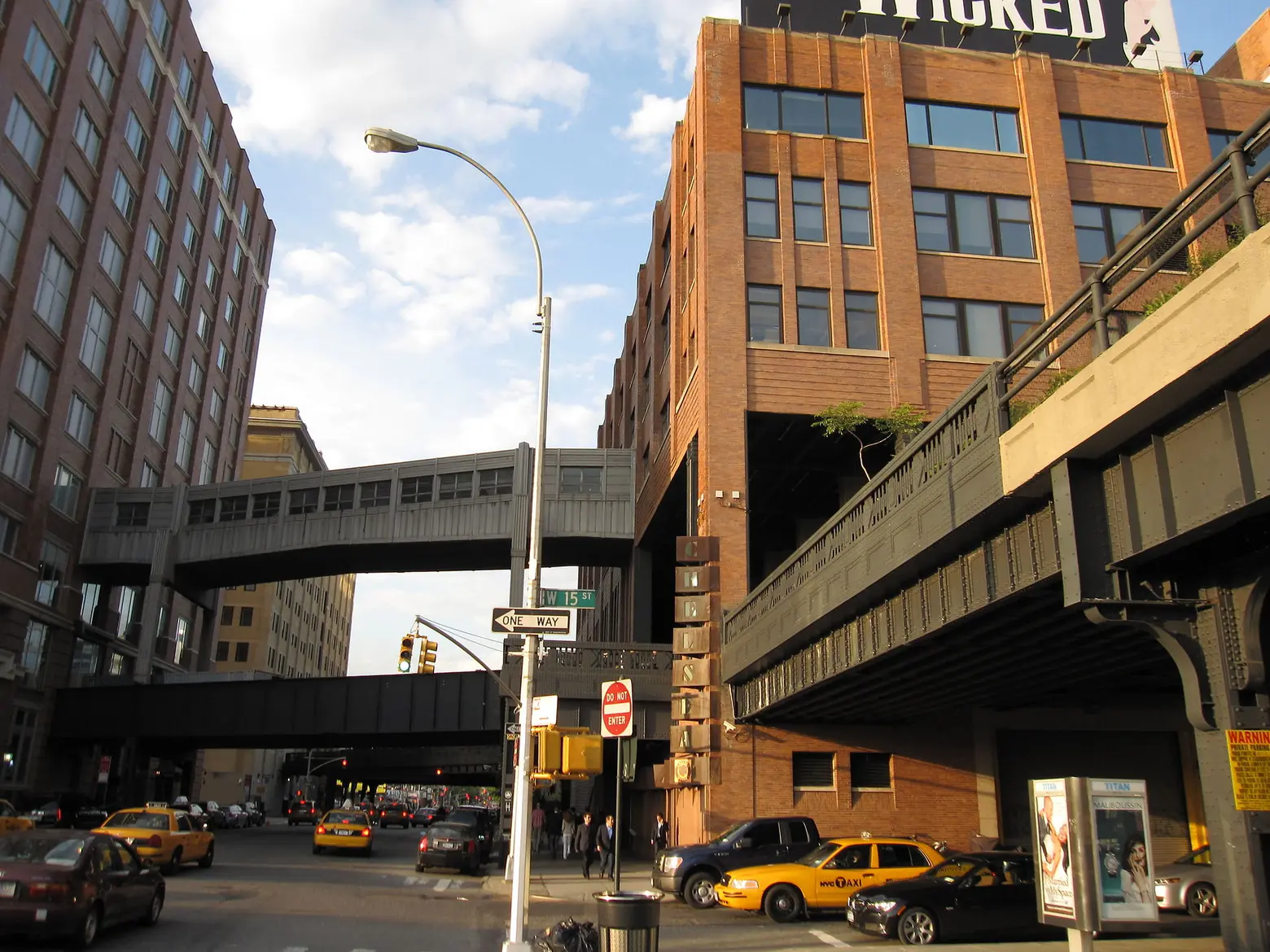 The aluminum pedestrian bridge at 15th Street and 10th Avenue, with the High Line running in the foreground, via Wiki Commons
The aluminum pedestrian bridge at 15th Street and 10th Avenue, with the High Line running in the foreground, via Wiki Commons
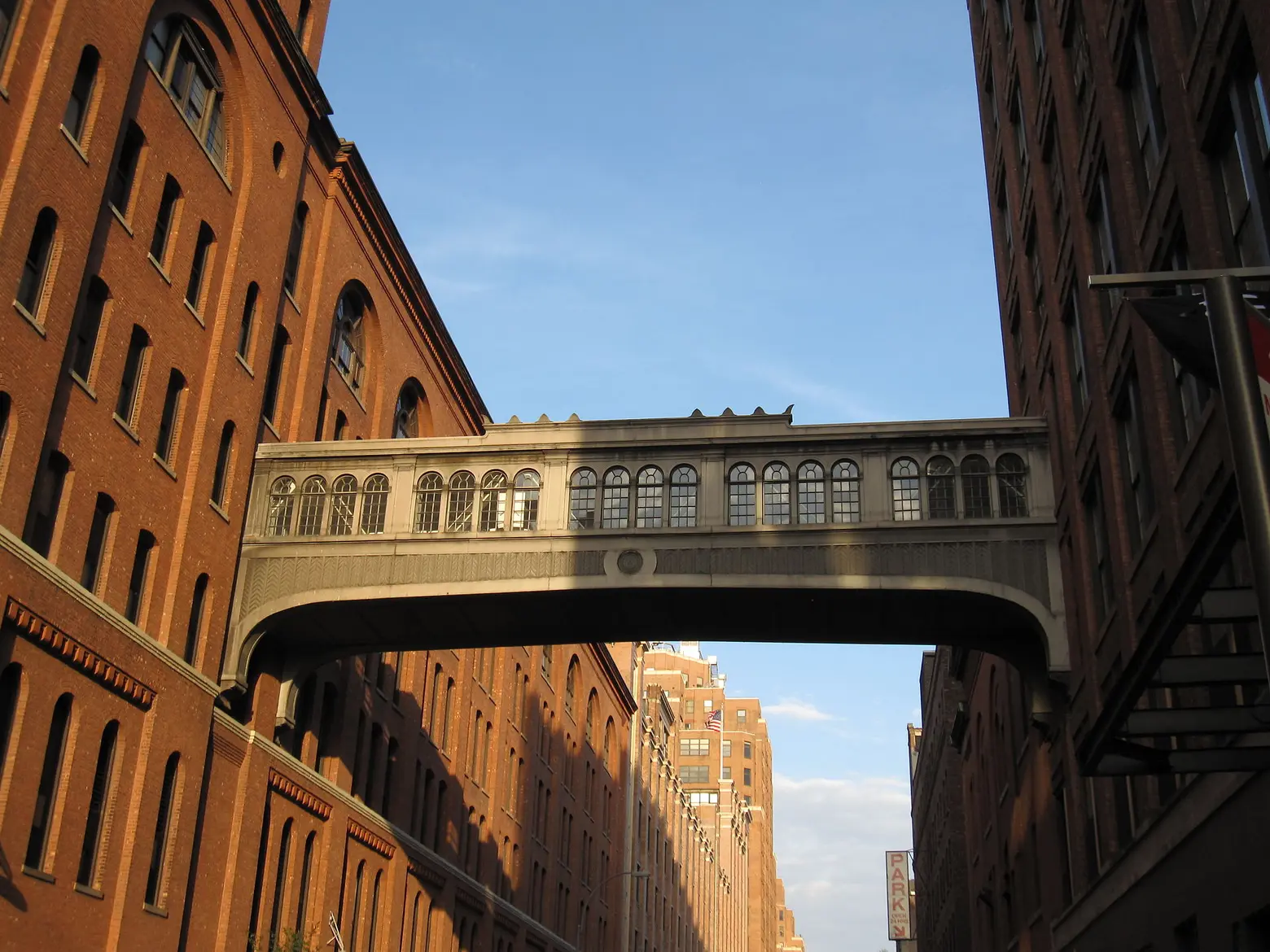 The Art Deco bridge at 447 West 14th Street, via Wiki Commons
The Art Deco bridge at 447 West 14th Street, via Wiki Commons
7. There are two bridge passageways that were added in the ’20s and ’30s to connect the building to its neighbors.
When Nabisco acquired the American Can Company building on 14th Street, they hired architect James Torrance to erect a classical pedestrian bridge joining the two buildings. Similarly, when the company asked architect Louis Wirsching Jr. to replace some of the 1890 bakers on the east side of 10th Avenue, they also enlisted him to design an aluminum-covered Art Deco pedestrian bridge.
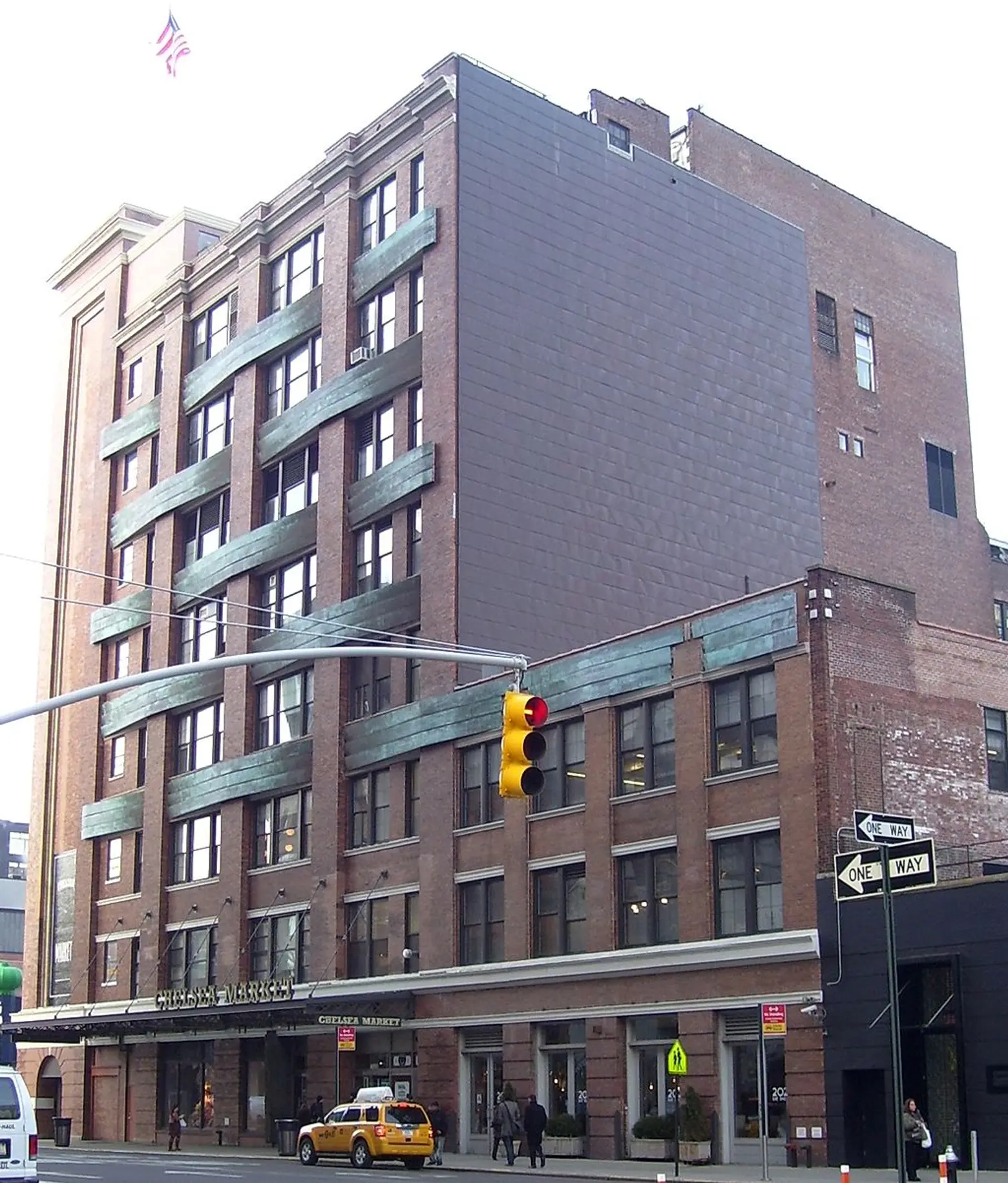 Via Wiki Commons
Via Wiki Commons
8. The building was nearly vacant and abandoned during the period where Nabisco left and prior to the 1990’s when Irwin Cohen purchased it.
According to Irwin Cohen, in the days post Nabisco when the building was nearly abandoned, “It was the Wild West in Manhattan. There had been three gangland-style murders in the building, with people on their knees shot in the back of the head. The building was controlled by street prostitutes, who told the staff when to open and close the loading docks. They used the loading docks for their clothes changes. And the tenants were in a revolt.”
9. The upper floor office space at Chelsea Market was created when Irwin Cohen purchased the property in the 1990s
The first tenants to lease space here were Food Network and several advertising companies. Back in the late ’90s, this was considered a risky move. Today, MLB.com and YouTube also call Chelsea Market home.
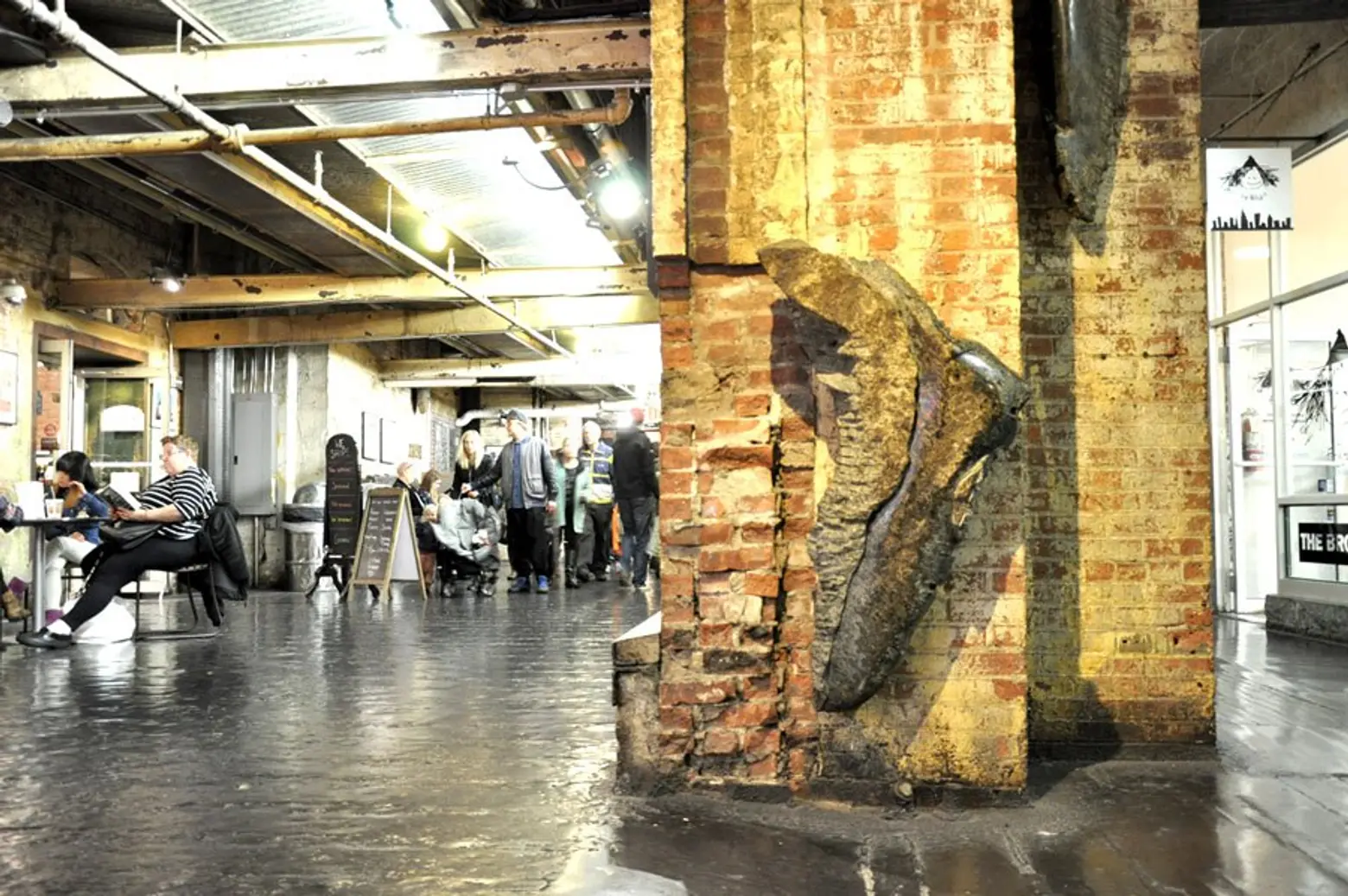 Via Cargo Collective
Via Cargo Collective
10. The market’s iconic fountain is constructed out of discarded drill bits and an exposed pipe.
Cohen brought in Vandeberg Architects to create the food hall space that we know today, focusing on adaptive reuse. The firm preserved the old factory floors, some old signs, and disused ducts. They also added funky touches like old cast iron light poles, banks of television sets, and portholes to the lobby. Perhaps the best-known of these projects, though, is the artificial waterfall made from discarded drill bits and an exposed pipe.
+++
RELATED:
